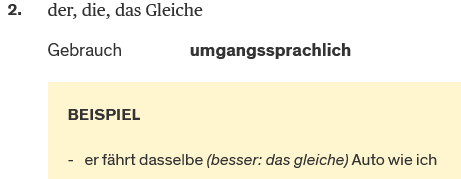Hallo, dieser engl. Satz in einem Gedankenstrom fiel mir auf:
Didn’t he used to take Mary to the restaurant?
Dort steht also „used“ mit „d“ am Ende. M.E. müsste es heißen:
Didn’t he use to take Mary to the restaurant?
Oder gibt es irgendeine Berechtigung für „used“ mit „d“ in diesem Satz?
Danke!
Servus,
Bei der Verneinung mit ‚didn’t‘ bleibt dieses ‚d‘ in der Umgangssprache oft stehen. Streng genommen hast du aber natürlich recht und das ‚d‘ müsste wegfallen.
LG
1 „Gefällt mir“
Penegrin, Danke. Der Satz steht in einem Gedankenstrom in der dritten Person, der sonst m.E. reines Schriftenglisch enthält und kein wanna, gonna, aint, it don’t oder sonstige Umgangssprache etc. - damit ist das „used“ oben falsch, oder?
Hallo,
dazu gibt es offenbar auch in Fachkreisen unterschiedliche Auffassungen. Die meisten Wörterbücher erwähnen nur „didn’t use to“; im Cambridge Dictionary z. B. taucht auch die Form „didn’t used to“ auf:
„The negative of used to is most commonly didn’t use(d) to . Sometimes we write it with a final -d , sometimes not. Both forms are common, but many people consider the form with the final -d to be incorrect, and you should not use it in exams …“
…
Hier sind weitere Auszüge aus Nachschlagewerken zu finden.
(Interessant die Anmerkung zum Ausdruck „used to“ in der Zusammenfassung am Schluss:
The problem is that “used to” is an anomalous verb (in the words of British linguist Geoffrey Leech).
It is not a normal verb: it has no present form (٭She uses to…); it has no perfect aspect (٭I have used to live there.); it has no infinitive. Neither is it a standard modal verb: it does not occur with perfect aspect (٭I used to have been working all morning.); it has interrogative, negative and emphatic forms with “did”. And so on.)
…
In manchen Fällen könnte es sich - auch bei versierten Verfassern - einfach um Flüchtigkeitsfehler beim Schreiben handeln, bedingt durch die gleiche Aussprache von „use to“ und „used to“.
Gruß
Kreszenz
3 „Gefällt mir“
Das Thema hat @Kreszentia ja schön zusammengefasst. Im Zweifel würde ich es für ein absichtliches stilistisches Mittel des Autors halten.
LG
Kreszenz und Penegrin, Danke für weitere Kommentare.
Kreszenz, Danke für hochinteressante Auszüge! Es klingt ein bisschen so, als ob „Didn’t used to“ vielleicht ein „Gewohnheitsrecht“ hat, geschrieben zu werden?
Ich weiß nicht, ob es die Sache erhellt, wenn ich sage, dass es ein US-Autor war.
Oder für einen Tippfehler, der hier sicher leicht unterlaufen kann.
… und - zumindest im BE-Regelwerk - zunehmend Akzeptanz findet.
Gibt es ja auch im Deutschen immer wieder, dass in Wörterbüchern Ausdrücke/Formulierungen auftauchen, die zuvor als eindeutig falsch und regelwidrig gegolten hatten - spontan fällt mir ein: „das g/Gleiche“ durfte keinesfalls synonym mit „dasselbe“ verwendet werden. Im aktuellen Duden nun unter derselbe, dieselbe, dasselbe zu lesen:
Gruß
Kreszenz
Ich würde gern bei der strikten Regel bleiben, aber es ist wohl gegen den Trend. In dem Zusammenhang fällt mir auch der Hauptsatz nach „weil“ ein, das ist glaubich auch jetzt teil-zulässig, ich finde es aber weiterhin haarsträubend.
Zu meinem ursprünglichen Beispiel „didn’t used to“ hatte ich gesagt, es steht in einem Kontext von Schulenglisch. Tatsächlich stehen in diesem Gedankenstrom in der dritten Person aber auch umgangssprachlichere Sätze wie
there’s nothing you can eat won’t hurt you ((sic))
((eine alte Goldkette)) must be worth fifteen hundred now, gold going crazy the way it is.
Some kind of garage, it looks like.
Und dann erneut als wörtliche Rede:
„Did they used to…“ (sic, nicht didn’t)
Insgesamt glaube ich jetzt auch, wie von Penegrin vorgeschlagen, dass es bewusst gewählt ist.
Im hier erwähnten Buch schrieb er immer „didn’t used to“. Im Nachfolgeband, den ich jetzt lese, steht generell „didn’t use to“…
Und im nächsten steht dann ‚used not to‘ 
